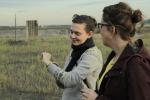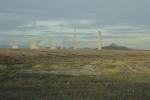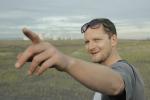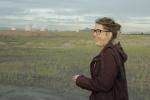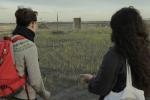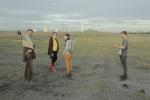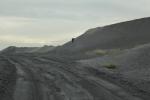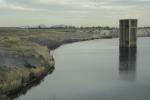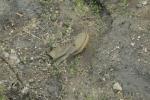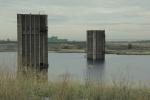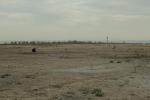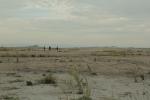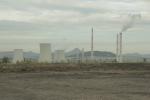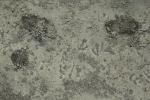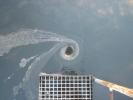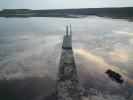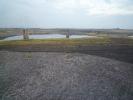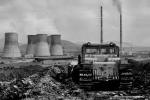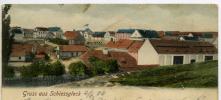Blog posts
Posts
A Hackers Manifesto, verze 4.0, kapitola 4.
By samotar, 10 January 2023
Alfred ve dvoře čili Poznámka k pražské hetero-utopii
By samotar, 10 November 2022
Trnovou korunou a tankem do srdíčka
By samotar, 2 July 2022
Hakim Bey - Informační válka
By samotar, 26 March 2022
Jean-Pierre Dupuy: Do we shape technologies, or do they shape us?
By samotar, 6 March 2022
Václav Cílek: Záhada zpívající houby
By samotar, 15 February 2022
Guy Debord - Teorie dérive
By samotar, 21 January 2022
Jack Burnham – Systémová estetika
By samotar, 19 November 2021
Poznámka pod čarou k výstavě Handa Gote: Věc, nástroj, čas, fetiš, hygiena, tabu
By samotar, 13 July 2021
Rána po ránech
By samotar, 23 May 2021
Na dohled od bronzového jezdce
By samotar, 4 March 2021
Z archivu:Mlha - ticho - temnota a bílé díry
By samotar, 7 October 2020
Zarchivu: Hůlna-kejdže
By samotar, 7 September 2020
Center for Land Use Interpretation
By samotar, 18 June 2020
Dawn Chorus Day - zvuky za svítání
By samotar, 30 April 2020
Z archivu: Bílé Břehy 2012 a Liběchov 2011
By , 3 April 2020
Z archivu: Krzysztof Wodiczko v DOXU
By samotar, 26 March 2020
GARY SNYDER: WRITERS AND THE WAR AGAINST NATURE
By samotar, 20 March 2020
Podoby domova: hnízda, nory, doupata, pavučiny, domestikace a ekologie
By samotar, 17 March 2020
Michel Serres: Transdisciplinarity as Relative Exteriority
By samotar, 5 November 2019
Pavel Ctibor: Sahat zakázáno
By samotar, 22 September 2019
Emmanuel Lévinas: HEIDEGGER, GAGARIN A MY
By samotar, 19 September 2019
Atmosférické poruchy / Atmospheric Disturbances - Ustí nad Labem
By samotar, 13 September 2019
Erkka Laininen: A Radical Vision of the Future School
By samotar, 10 August 2019
Anton Pannekoek: The Destruction of Nature (1909)
By samotar, 21 July 2019
Co padá shůry - světlo, pelyněk, oheň a šrot
By samotar, 30 December 2018
2000 slov v čase klimatických změn - manifest
By samotar, 2 November 2018
Vladimír Úlehla, sucho, geoinženýrství, endokrinologie, ekologie a Josef Charvát
By samotář, 22 September 2018
Lukáš Likavčan: Thermodynamics of Necrocracy - SUVs, entropy, and contingency management
By samotar, 20 July 2018
Tajemství spolupráce: Miloš Šejn
By samotar, 27 June 2018
Invisible Images (Your Pictures Are Looking at You) Trevor Paglen
By samotar, 2 June 2018
KŘEST KNIHY KRAJINA V POZORU: THE LANDSCAPE IN FOCUS.
By samotar, 18 May 2018
Případ zchudlé planety:Vojtěch Kotecký
By samotar, 22 April 2018
Rozhovor na Vltavě: Jak umění reaguje na dobu antropocénu?
By samotar, 10 March 2018
Skolt Sámi Path to Climate Change Resilience
By samotar, 10 December 2017
Brian Holmes: Driving the Golden Spike - The Aesthetics of Anthropocene Public Space
By samotar, 22 November 2017
Ohlédnutí/Revisited Soundworm Gathering
By samotař, 9 October 2017
Kleté krajiny
By samotar, 7 October 2017
Kinterova Jednotka a postnatura
By samotař, 15 September 2017
Ruiny-Černý trojúhelník a Koudelkův pohyb v saturnských kruzích
By samotar, 13 July 2017
Upsych316a Universal Psychiatric Church
By Samotar, 6 July 2017
Miloš Vojtěchovský: Krátká rozprava o místě z roku 1994
By milos, 31 May 2017
Za teorií poznání (radostný nekrolog), Bohuslav Blažek
By miloš vojtěchovský, 9 April 2017
On the Transmutation of Species
By miloš vojtěchovský, 27 March 2017
Gustav Metzger: Poznámky ke krizi v technologickém umění
By samotař, 2 March 2017
CYBERPOSITIVE, Sadie Plant a Nick Land
By samotař, 2 March 2017
Ivan Illich: Ticho jako obecní statek
By samotař, 18 February 2017
Dialog o primitivismu – Lawrence Jarach a John Zerzan
By samotar, 29 December 2016
Thomas Berry:Ekozoická éra
By samotař, 8 December 2016
Jason W. Moore: Name the System! Anthropocenes & the Capitalocene Alternative
By miloš vojtěchovský, 24 November 2016
Michel Serres: Revisiting The Natural Contract
By samotař, 11 November 2016
Best a Basta době uhelné
By samotař, 31 October 2016
Epifanie, krajina a poslední člověk/Epiphany, Landscape and Last Man
By Samotar, 20 October 2016
Doba kamenná - (Ein, Eisen, Wittgen, Frankenstein), doba plastová a temná mineralogie
By samotař, 4 October 2016
Hledání hlasu řeky Bíliny
By samotař, 23 September 2016
Harrisons: A MANIFESTO FOR THE 21ST CENTURY
By , 19 September 2016
T.J. Demos: Anthropocene, Capitalocene, Gynocene: The Many Names of Resistance
By , 11 September 2016
Bratrstvo
By samotař, 1 September 2016
Neptunismus a plutonismus na vyhaslé sopce Bořeň
By , 14 August 2016
Murray Bookchin: Toward an Ecological Society/ K ekologické společnosti (1974)
By samotař, 31 July 2016
Metafory, endofyzika, manželé Themersonovi a Gordon Pask
By samotař, 15 July 2016
Anima Mundi Revisited
By miloš vojtěchovský, 28 June 2016
Simon A. Levin: The Evolution of Ecology
By samotař, 21 June 2016
Anna Remešová: Je možné představit si změnu?
By samotar, 20 June 2016
Jan Hloušek: Uranové město
By samotař, 31 May 2016
Josef Šmajs: Složí lidstvo zkoušku své racionální dospělosti?
By samotař, 20 May 2016
Manifest The Dark Mountain Project
By Samotar, 3 May 2016
Pokus o popis jednoho zápasu
By samotar, 29 April 2016
Václav Cílek: Antropocén – velké zrychlení světa
By Slawomír Uher, 23 April 2016
Nothing worse or better can happen
By Ewa Jacobsson, 5 April 2016
Real Reason we Can’t Stop Global Warming: Saskia Sassen
By , 18 March 2016
The Political Economy of the Cultural Commons and the Nature of Sustainable Wealth
By samotar, 12 March 2016
Jared Diamond - Easter's End
By , 21 February 2016
Felix Guattari - Three Ecologies (part 1)
By , 19 February 2016
W. H. Auden: Journey to Iceland
By , 9 February 2016
Jussi Parikka: The Earth
By Slawomír Uher, 8 February 2016
Brian Holmes: Extradisciplinary Investigations. Towards a New Critique of Institutions
By Stanislaw, 7 February 2016
Co číhá za humny? neboli revoluce přítomnosti
By Miloš Vojtěchovský, 31 January 2016
Podivuhodný osud polárníka a malíře Julia Payera
By , 23 January 2016
Red Sky: The Eschatology of Trans
By Miloš Vojtěchovský, 19 January 2016
#AKCELERACIONISTICKÝ MANIFEST (14. května 2013)
By samotar, 7 January 2016
The Forgotten Space: Notes for a Film
By , 7 January 2016
Rise and Fall of the Herring Towns:Impacts of Climate and Human Teleconnections
By , 25 December 2015
Hlubinná, temná, světlá i povrchová ekologie světa
By , 22 December 2015
Three short movies: Baroque Duchcov, New Lakes of Mostecko and Lignite Clouds
By Michal Kindernay, 21 December 2015
Lenka Dolanová: Umění mediální ekologie
By , 21 December 2015
Towards an Anti-atlas of Borders
By , 20 December 2015
Pavel Mrkus - KINESIS, instalace Nejsvětější Salvátor
By Miloš Vojtěchovský, 6 December 2015
Tváře/Faces bez hranic/Sans Frontiers
By Miloš Vojtěchovský, 29 November 2015
Josef Šmajs: Ústava Země/A Constitution for the Earth
By Samotar, 28 November 2015
John Jordan: The Work of Art (and Activism) in the Age of the Anthropocene
By Samotar, 23 November 2015
Humoreska: kočky, koulení, hroby a špatná muška prince Josefa Saského
By Samotar, 13 November 2015
Rozhovor:Před věčným nic se katalogy nesčítají
By Samotar, 11 November 2015
Lecture by Dustin Breiting and Vít Bohal on Anthropocene
By Samotar, 8 November 2015
Antropocén a mocné žblunknutí/Anthropocene and the Mighty Plop
By Samotar, 2 November 2015
Rory Rowan:Extinction as Usual?Geo-Social Futures and Left Optimism
By Samotar, 27 October 2015
Pavel Klusák: Budoucnost smutné krajiny/The Future of a Sad Region
By ll, 19 October 2015
Na Zemi vzhůru nohama
By Alena Kotzmannová, 17 October 2015
Upside-down on Earth
By Alena Kotzmannová, 17 October 2015
Thomas Hylland Eriksen: What’s wrong with the Global North and the Global South?
By Samotar, 17 October 2015
Nýey and Borealis: Sonic Topologies by Nicolas Perret & Silvia Ploner
By Samotar, 12 October 2015
Images from Finnmark (Living Through the Landscape)
By Nicholas Norton, 12 October 2015
Bruno Latour: Love Your Monsters, Why We Must Care for Our Technologies As We Do Our Children
By John Dee, 11 October 2015
Temné objekty k obdivu: Edward Burtynsky, Mitch Epstein, Alex Maclean, Liam Young
By Samotar 10 October 2015, 10 October 2015
Czech Radio on Frontiers of Solitude
By Samotar, 10 October 2015
Beyond Time: orka, orka, orka, nečas, nečas, nečas
By Samotar, 10 October 2015
Langewiese and Newt or walking to Dlouhá louka
By Michal Kindernay, 7 October 2015
Notice in the Norwegian newspaper „Altaposten“
By Nicholas Norton, 5 October 2015
Interview with Ivar Smedstad
By Nicholas Norton, 5 October 2015
Iceland Expedition, Part 2
By Julia Martin, 4 October 2015
Closing at the Osek Monastery
By Michal Kindernay, 3 October 2015
Iceland Expedition, Part 1
By Julia Martin, 3 October 2015
Finnmarka a kopce / The Hills of Finnmark
By Vladimír Merta, 2 October 2015
Od kláštera Osek na Selesiovu výšinu, k Lomu, Libkovicům, Hrdlovce a zpět/From The Osek Cloister to Lom and back
By Samotar, 27 September 2015
Sápmelažžat Picnic and the Exploration of the Sami Lands and Culture
By Vladimir, 27 September 2015
Gardens of the Osek Monastery/Zahrady oseckého kláštera
By ll, 27 September 2015
Workshop with Radek Mikuláš/Dílna s Radkem Mikulášem
By Samotářka Dagmar, 26 September 2015
Czech Radio Interview Jan Klápště, Ivan Plicka and mayor of Horní Jiřetín Vladimír Buřt
By ll, 25 September 2015
Bořeň, zvuk a HNP/Bořeň, sound and Gross National Product
By Samotar, 25 September 2015
Já, Doly, Dolly a zemský ráj
By Samotar, 23 September 2015
Up to the Ore Mountains
By Michal, Dagmar a Helena Samotáři , 22 September 2015
Václav Cílek and the Sacred Landscape
By Samotář Michal, 22 September 2015
Picnic at the Ledvice waste pond
By Samotar, 19 September 2015
Above Jezeří Castle
By Samotar, 19 September 2015
Cancerous Land, part 3
By Tamás Sajó, 18 September 2015
Ledvice coal preparation plant
By Dominik Žižka, 18 September 2015
pod hladinou
By Dominik Žižka, 18 September 2015
Cancerous Land, part 2
By Tamás Sajó, 17 September 2015
Cancerous Land, part 1
By Tamás Sajó, 16 September 2015
Offroad trip
By Dominik Žižka, 16 September 2015
Ekologické limity a nutnost jejich prolomení
By Miloš Vojtěchovský, 16 September 2015
Lignite Clouds Sound Workshop: Days I and II
By Samotar, 15 September 2015
Recollection of Jezeří/Eisenberg Arboretum workshop
By Samotar, 14 September 2015
Walk from Mariánské Radčice
By Michal Kindernay, 12 September 2015
Mariánské Radčice and Libkovice
By Samotar, 11 September 2015
Tušimice II and The Vicarage, or the Parsonage at Mariánské Radčice
By Samotar, 10 September 2015
Most - Lake, Fish, algae bloom
By Samotar, 8 September 2015
Monday: Bílina open pit excursion
By Samotar, 7 September 2015
Duchcov II. - past and tomorrow
By Samotar, 6 September 2015
Duchcov II.
By Samotar, 6 September 2015
Arrival at Duchcov I.
By Samotar, 6 September 2015
Poznámka k havárii rypadla KU 300 (K severu 1)
By Samotar, 19 August 2015
pod hladinou
Lokalita lomu Třískolupy ležela na katastrálním území obce Třískolupy, okres Louny a menší část na katastrálním území obce Polerady v okrese Most. Obec Třískolupy byla kvůli těžbě zlikvidována.
Třískolupy (německy Schiessglock) jsou katastrální území a zaniklá vesnice v okrese Louny. V roce 1910 zde ve 32 domech žilo 194 obyvatel. Vesnice byla vysídlena a zbourána kolem roku 1970 při výstavbě Elektrárny Počerady. Území dnes spadá pod obec Výškov.
Otvírka separátní pánve tohoto lomu byla podmíněna potřebou energetického uhlí pro zásobování elektrárny Počerady I až do doby jejího definitivního zásobování uhlím z lomu Vršany. Těžební činnost lomu Třískolupy byla ukončena k 31.12.1982. Tvarování výsypkových etáží bylo prováděno v souladu s projektovou dokumentací, aby byla na východním okraji vytvořena hráz budoucí popelové skládky. Vyuhlený lom byl využit jako odkaliště popílku pro elektrárnu Počerady.
Z původně hydraulického odpopílkování a odstruskování se od roku 1997 začalo postupně přecházet na suchý odběr popílku a jeho následné zpracování na stabilizát. Stabilizátu se v elektrárně využívá pro tvarové úpravy a nepropustné překrytí bývalého uhelného lomu Třískolupy. Dále jej lze využívat pro asanaci, rekultivaci a tvarové úpravy reliéfu krajiny a jako materiálu k vytváření náspů silnic a podkladového materiálu pro stavbu vozovek.
Obyvatelstvo se živilo převážně zemědělstvím, např. pěstováním chmele. V roce 1719 bylo severně od Polerad objeveno hnědé uhlí. Těžba se rozšířila po roce 1770. V průběhu 19. století se v okolí Polerad nacházelo zhruba osm menších dolů. Nejvýznamnějším byla šachta Moravia, která byla v roce 1942 připojena k šachtě Mariana ve Skyřicích. Jihozápadně od Polerad stála rovněž cihelna.
Obyvatelstvo se tradičně živilo zemědělstvím. Rozvoj těžby uhlí přinesl i práci v dolech, neboť na katastru obce byl v roce 1901 zahájen provoz na šachtě Prokop V roce 1907 byla v obci otevřena škola pro děti ze Skyřic a sousedních Velebudic. Za druhé světové války zde byl roku 1941 zřízen zajatecký tábor pro dělníky na dolech. V roce 1960 byly ke Skyřicím připojeny sousední Velebudice jako osada.Obec Skyřice byla zbořena kvůli výstavbě průmyslového areálu Velebudice v 1. polovině 70. let 20. století. Katastr obce byl od 1. 1. 1976 připojen k Mostu.
Elektrárna Počerady patří mezi nejvyužívanější uhelné elektrárny v České republice. Svým instalovaným výkonem a poměrně vysokým vytěžováním ovlivňuje významným způsobem ekonomiku a životní prostředí celého regionu severozápadních Čech. Dodávku tepla zajišťuje elektrárna pouze pro svůj provoz. Realizované technické a ekologické programy elektrárně zajišťují spolehlivý, ekonomický a k životnímu prostředí šetrný provoz, plně srovnatelný s obdobnými provozy ve vyspělých státech Evropy.
Power Plant Pocerady is situated in the north-west part of the Czech Republic, nearly in the middle among the towns of Louny, Zatec, and Most.
The initial installed power output of the plant was 6 x 200 MW. The power plant construction itself was organized in two stages. The first stage included construction of PP Pocerady I (Units no. 1 to 4). Units no. 1 and 2 were introduced into operation in 1970, Units no. 3 and 4 commenced their operation in the year 1971. Within the second stage, PP Pocerady II was constructed (Units no. 5 and 6). Those units were put into operation in 1977.
Under the framework of coal power plant operation attenuation program, as of 1 January 1994, production unit no. 1 was decommissioned . In the period of 1990 to 2000, the remaining units were subjected to an extensive modernization & environmental program, providing for an achievement of better technology parameters and an ample reserve for ensuring compliance with strict requirements, as stipulated in the new environmental legislation.
The environmental program implementation enabled the power plant management to change fundamentally their business philosophy. The initial business philosophy was based on production of electrical power as a single product. Consequently, large amounts of undesirable emissions and waste came into existence, in parallel with the production.
The new business philosophy focuses on a creation of such a state of technology processes within the power plant, that would enable, apart from electrical power production (being the staple product of the power plant), additionally, production of a whole range of building materials from what used to be waste products. This particular state of affairs has been achieved, together with a significant reduction in the total volume of emissions and waste produced. From the commercial viewpoint, the building materials produced perform quite well on the market. This particular business philosophy includes, in addition, an objective aiming to achieve such a state of circulation of all materials within the production facility, when the power plant may be operated with waste free technology, to the maximum extent.
In October 1994, the first two desulphurized 200 MW Units in the Czech Republic were introduced into operation of PP Pocerady (Units no. 5 and no. 6). The desulphurization equipment with the units is designed on the wet limestone washing principle. In autumn 1996, the three other desulphurized units were put into operation (Unit no. 2, no. 3, and no. 4).
In the power plant near vicinity, consequent to the desulphurization equipment construction, a German-Czech joint venture was set up (KNAUF - Pocerady, s.r.o.), producing gypsum plaster boards from power plant gypsum, the desulphurization process waste. This joint venture has been in full operation since February 1995. A surplus of the power plant gypsum produced, then, is preformed into briquettes and supplied to cement works as a substitute for natural gypsum.
Since 1997, the trends are gradually transformed from the initial hydraulic ash and slag removal processes to dry fly-ash removal and its consequent processing into a stabilized mixture. Within the power plant, the stabilized mixture is used for shaping and impermeable coverage of the former Triskolupy Coal Mine. Then, it can be used in country recultivation and landscaping, as well as material for road earth fills and road construction background layers.
PP Pocerady belongs to the most utilized coal power plants within the Czech Republic. With its power output installed and relatively intensive utilization, it reflects significant levels of influence in both economy and environment of the entire North & West Bohemia region. The power plant only supplies heat power for its internal operation. Both technology and environmental programs implemented ensure reliable, economic, and environmentally conscious operation of the power plant, fully comparable with similar operations in other countries of Europe.
The basic technology concept of all the production units is identical. Since the end of 2001, all the production units are controlled from a single technology control room (STD). From STD, in addition, joint operations of desulphurization and water chemical treatment are controlled. The central control room, then, ensures the electrical power consumption needs and is in charge, in coordination with the national dispatching service, of the dispatching functionality.
The initial I & C system incorporated in the units was replaced, within the process of modernization, by GE Fanuc microprocessor control system. The control process itself is ensured through computer control keyboards from STD control rooms. Desulphurization, coaling, and water management operations are controlled by a Finnish METSO company system.
The power plant burns power brown coal, transported on railways from Most coal basin surface mines, mostly from the Vrsany location. The water is supplied to the power plant from Ohre river. A water inflow structure is constructed at Brezno village, near to the town of Louny.
PG 640 boilers supplied by Vitkovice Company are erected as semi-outdoor structures. The boilers are of once-through design, with steam overheating, double-pass, granulating, and forced-draft.
Turbines, with nominal power output of 200 MW, were manufactured in Skoda Pilsen Company. These are of three-stage, active, condensing design with steam overheating between the high and medium pressure stages, and eight unregulated steam off-takes for turbine condensate and utility water heating.
A. C. generators with the power output of 200 MW (235 MVA, 15 kV) are of three-stage design with direct cooling of stator winding by the condensate. Rotors are cooled by hydrogen
from ČEZ web

